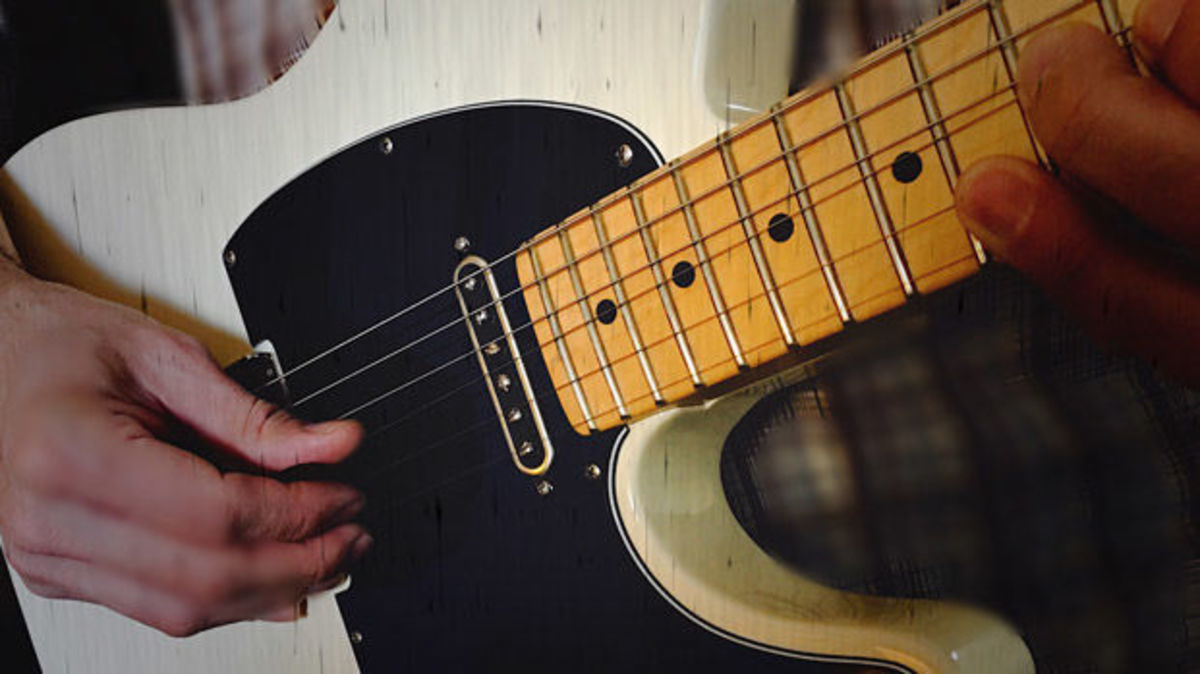How to play blues guitar solos
Learn to play over the all-important 12-bar blues progression

The 12 bar blues is a chord progression that consists of 12 bars, is usually in 4/4 time and is a staple for any blues artist. Generally, lead blues guitarists solo over this structure using a combination of the pentatonic minor and blues scales, whether they're playing electric guitar or acoustic.
But before you begin your best BB King impersonation, it’s important to understand how to play over the most famous blues chord progression in the world.
It’s advisable to start with either the pentatonic minor scale, or the blues scale, which is the pentatonic minor with one additional note.
A pentatonic minor & blues scales

Remember that they can be played in any key. The examples depicted above are in the key of A because the root note is an A on the 5th fret of the low E string. If the root was at the 3rd fret of the low E string, then the scale would be in the key of G because the root note is a G. These scale patterns are easily moveable around the neck. If you don’t know these scales yet, take this opportunity to memorize them.
A lot of beginner guitarists simply play the scales they learn without any emotion. It’s great to memorize the scale pattern and hit all the right notes, but once you’ve mastered that, it’s important to add a little flair. Remember that expressive techniques like bends, slides, hammer-ons, pull-offs and vibrato can transform the most basic of licks into something with a bit more emotion.
Note targeting means playing phrases and licks so that they resolve on a specific note at the right time. The most basic example of this is playing a lick that lands on the root note of the scale at the same time the rhythm reaches the root chord. In other words, the lead guitarist plays a lick within the A pentatonic minor scale that finishes on the root note just as the rhythm guitarist strums an A minor chord.
The 12-bar blues chord progression
In order to land on a certain note as the chord changes, you’ll have to remember the basic chord progression of the 12 bar blues. These chords change depending on key, but the formula is always the same. Check out the chart below to refresh yourself on the structure of the 12 bar blues.
All the latest guitar news, interviews, lessons, reviews, deals and more, direct to your inbox!

Remember that these chords correspond to the scale they’re taken from. Let’s take a look at the C major scale:
C-D-E-F-G-A-B
Chord 1 is therefore C, chord 4 is F and chord 5 is G. The formula remains the same for other keys as well. The formula will always use chords 1, 4 and 5.
Yes! Jamming with friends, using loop pedals or backing tracks are all great ways to practice playing lead over 12-bar blues. Good luck, and enjoy!
Billy is the Community Specialist for Guitartricks.com, the #1 Online Guitar Lessons website. GuitarTricks.com has over 11,000 lessons covering everything a beginner guitar needs to know to get started, as well as more complicated techniques like tapping, sweeping, scales and more.
